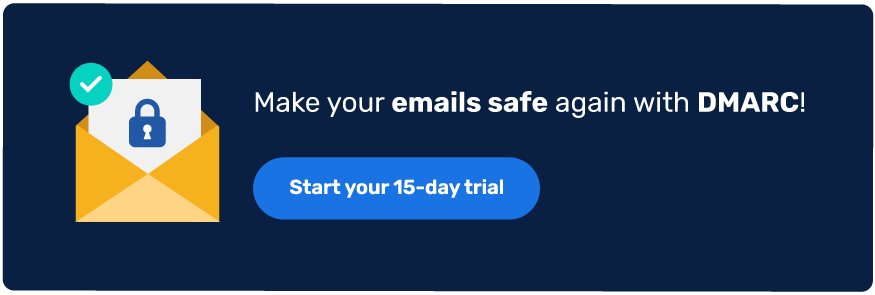Created to protect the inbox from spam, DMARC is an easy method that gives recipients of an email the ability to verify its validity and prevent domain abuse. Existing email SPF and DKIM protocols have been subject to scrutiny for years, but DMARC is a major step forward in the fight against cybercrime, building on the existing protocols to strengthen the authentication system further.
Cybercriminals are well-known for their devious tactics. They use the reputation of trusted brands to trick victims into opening malicious files or emails that contain malware, allowing them access to the victim’s computer to find confidential data, through email spoofing. A common method for conducting abuse of company domains is through spoofing when attackers impersonate the domains of small, medium, and large enterprises that do not practice email authentication.
Key Takeaways
- DMARC enhances email validity verification, significantly reducing instances of domain abuse.
- Implementing DMARC helps protect against email spoofing, which cybercriminals often use to exploit brand reputations.
- The addition of a DMARC record to your DNS is essential for establishing your email authentication policy.
- DMARC works in conjunction with SPF and DKIM to improve overall email security and deliverability.
- Utilizing DMARC report analyzers allows businesses to quickly visualize and act on authentication data for better domain protection.
How to Add a DMARC Record?
DMARC is an email authentication standard that enables the identification and prevention of email phishing and the misuse of company domains. It allows organizations to publish email policies, revealing details about the use of their domains for sending emails. Configuring the protocol requires the domain owner to add a DMARC record to their Domain Naming System.
A DMARC record is a text record with a specific syntax that points towards the DMARC policy you want to select for your outbound emails, your SPF and DKIM alignment modes, and email addresses wherein you wish to receive your DMARC aggregate and forensic reports.
With DMARC you can direct your email receiving servers to either:
- Deliver emails failing authentication (with p=none policy)
- Quarantine emails failing authentication (with p=quarantine policy)
- Reject emails failing authentication (with p=reject policy)
It’s easy to get your record syntax wrong that can render it invalid. We recommend using a DMARC record generator tool that instantly creates it for you. Moreover, it individually explains all mechanisms in the toolbox so you have a better understanding of the protocol and its functionalities.
Simplify DMARC with PowerDMARC!
How Does DMARC Protect Your Domain’s Emails?
For a company that sends out newsletters and makes use of email marketing campaigns, DMARC ensures that you only receive authentic and verified emails from sources that are authorized to send emails to your recipients on your behalf. Spam and other fraudulent emails with fake information are immediately stopped. Working together with SPF and DKIM, DMARC aligns email headers to identify whether the email originates from a legitimate source or has been manipulated using social engineering tactics to forge a legitimate domain.
Along with its various advantages against domain abuse and spoofing, DMARC also:
- Improves server reputation
- Improves email deliverability
- Reduces the chance of your emails being marked as spam
PowerDMARC Makes DMARC Adoption Easy for Businesses
Configure our DMARC report analyzer today to not only implement the protocol in 3 easy steps but shift to an enforced policy with maximum protection, in no time. Receive your first DMARC reports within 72 hours of configuration and view them on an organized dashboard customized for your domain!
PowerDMARC brings to you the additional benefit of implementing other authentication protocols such as MTA-STS and BIMI to make your brand visually identifiable and boost your email marketing campaigns. Get the best out of your DMARC software solution today!




